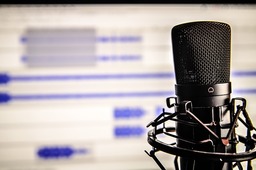Sound processing

The modules included in this section have in common the fact that they gather sound from a microphone or other enabled audio sources. Sound captured this way is processed in accordance with the specificity of the module. Tools such as an oscilloscope or a spectrum analyzer can be found here. Before you start browsing this category, make sure that your microphone is connected.
Guitar tuner
Universal instrumental tuner. It's designed to tune instruments like guitar o violin in chromatic scale.
Oscilloscope
Digital oscilloscope in your web browser. This tool enables to observe of the acoustic waveform read from the microphone (waveform).
Spectral analyzer
Spectral analyzer online. This tool allows to see audio signals splitted into frequency bandwidthes.